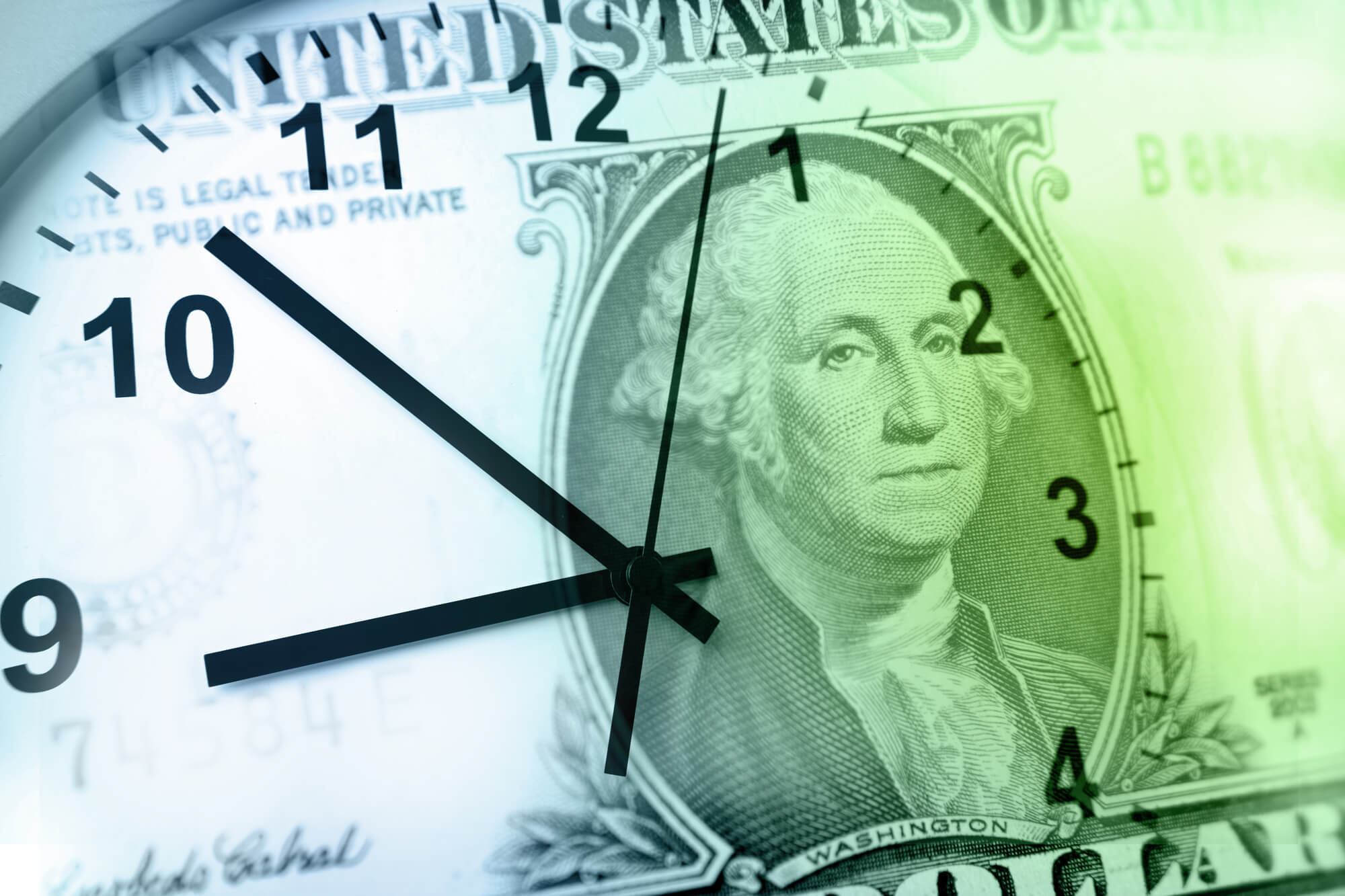What’s a savings rate? How do you calculate your savings rate? Why is a savings rate important?
All of these questions and more may be on your mind. And rightly so, since knowing how to calculate and track your savings rate is an important piece of your journey to financial independence — it’s an integral guidepost along the way up your financial mountain.
Below is a comprehensive guide that teaches you how to calculate your savings rate, how to increase it, and what to avoid when doing so. Bookmark this article to remember these quick tips, and read the linked articles for greater detail on each subject. Soon enough, you’ll look back from the peak and see how the journey from basecamp helped you get there.
Let’s climb, FinBase!
1. Calculate Your Financial Independence Number
When it comes to your savings rate, the first place to start is what you’re actually saving for. Thankfully, the math to understanding the amount of money you’ll need to retire is simple.
To calculate your financial independence number, simply take your annual expenses and divide them by your estimated withdrawal rate (the percentage you plan to withdraw from your retirement savings each year). The number you calculate is your financial independence (FI) number.
For example, if your annual expenses were $50,000 and your withdrawal rate is 4%, your financial independence number would be $1,250,000 ($50,000 / 0.04 (or 4%) = $1,250,000). An easier way to do this calculation is to multiply by 25 instead ($50,000 x 25 = $1,250,000). The end result is the same. Using 4% as a rule of thumb to make this calculation is the standard when calculating spend against your retirement portfolio (adjusted for inflation and with a 30 year time horizon).
Breaking down this calculation would look like this:
Annual Expenses: $50,000
Withdrawal Rate: 4% (which is 4 / 100, or 0.04)
$50,000 / 0.04 = $1,250,000
or
$50,000 x 25 = $1,250,000
Financial Independence Number: $1,250,000
This is the number in which you’d be able to successfully retire and live off your investments by saving and investing your FI number amount. Following are a few examples of FI number calculations.
| Annual Expenses | Withdrawal Rate | Financial Independence Number |
| $30,000 | 4% | $750,000 |
| $40,000 | 4% | $1,000,000 |
| $50,000 | 4% | $1,250,000 |
| $60,000 | 4% | $1,500,000 |
| $63,036 | 4% | $1,575,900 |
| $75,000 | 4% | $1,875,000 |
| $100,000 | 4% | $2,500,000 |
For more details and considerations regarding how to find and adjust your financial independence number over time, check here.
2. Calculate Your Savings Rate
A savings rate is integral to helping you map out your personal finances, especially when charting your way to financial independence. It helps you understand what you’re saving today, and will help motivate you to find ways to increase your savings rate.
To calculate your savings rate, divide your monthly savings by your monthly income, and multiply by 100 to get your savings rate percentage. For example, if you had $1,000 in savings and $4,000 in income each month, your savings rate would be 25% ($1,000 / $4,000 = .25 or 25%). This calculation also works annually. If you had $12,000 in savings and $48,000 in income each year, your savings rate would be $12,000 divided by $48,000, or 25%.
Another reason why your savings rate is an important personal finance calculation is because it helps you understand the impact of your savings on your retirement. As a general rule, the more you save, the sooner you will be able to retire. So, the higher your savings rate today, the sooner you can reach financial independence tomorrow.
Generally (assuming a current zero net worth, 5% annual returns, and an FI number calculated with the 4% rule), the amount of time it will take you to reach financial independence based on your savings rate looks like this.
| Savings Rate | Working Years Until Retirement |
|---|---|
| 5% | 65 |
| 10% | 51 |
| 15% | 42 |
| 20% | 36 |
| 25% | 32 |
| 30% | 28 |
| 35% | 24 |
| 40% | 21 |
| 45% | 19 |
| 50% | 17 |
| 55% | 14 |
| 60% | 12 |
| 65% | 11 |
| 70% | 9 |
| 75% | 7 |
| 80% | 6 |
| 85% | 4 |
| 90% | 3 |
| 95% | 2 |
Breaking this down further, the amount you’re saving each year is growing by 1) your contributions, and 2) the compounding gains of your investments (5% in this example). If we were to look at the numbers assuming a $50,000 annual salary, they would look like this.
| Annual Income | Annual Savings | Savings Rate | Annual Expenses | FI Number (Annual Expenses / 4%) | Years to FI |
| $50,000 | $25,000 | 50% | $25,000 | $625,000 | 17 |
For more details on calculating your savings rate, like whether to use gross or net income, read on here.
3. Beat the National Savings Rate
When it comes to investing, it’s wise to be average. A 7% return can carry you all the way to financial independence – and ironically, 7% is also the average rate Americans save annually. However, when it comes to your personal savings, you need to be better than most. Why? Because the less you save and the more you spend, the longer it will take you to reach financial independence.
As a general rule, you should increase your savings rate to 10-20% of your income to beat the national average. As you progress toward reaching financial independence, you should increase your savings rate to 50% or more.
By setting aside 20-50% of your income, your savings rate is guaranteed to be higher than the national average. Beating the national savings rate will enable you to reach your financial goals in well under the traditional 40+ years it would otherwise take.
If you had a savings rate of 5%, it would take you 65 years to reach financial independence (assuming a current zero net worth, 5% annual returns, and an FI number calculated with the 4% rule). Conversely, if you increased your savings rate to 25%, you could reach financial independence in 32 years. Increasing your savings rate to 50% would make it possible for you to summit your financial mountain in a mere 17 years.
If you’re hovering at or below the national average savings rate, take heart. There are many ways to improve your savings rate, and many reasons why you may be mishandling your money. For more details, read here.
4. Avoid Pitfalls When Calculating Your Savings Rate
A savings rate is not a silver bullet. If assumptions regarding your savings rate are based off of an investment return higher than your actual return, or if you plan on spending more money than you do in your current savings rate calculations once you retire, it will take you longer to reach financial independence.
To explain, the assumptions made when calculating your savings rate and the time it takes you to reach financial independence are important to remember. If those assumptions change, however, so does the impact of your savings rate on retirement. For example, if you have a salary of $50,000 and a savings rate of 25%, but didn’t invest your money, it would take you 75 years to reach financial independence instead of 32. And if your investments were only providing a 3% return, it would take you 40 years to reach financial independence.
| Year | Savings | Contributions | Growth | Year End Balance |
| 1 | $0 | $12,500 | 0 | $12,500 |
| 2 | $12,500 | $12,500 | 0 | $25,000 |
| 3 | $25,000 | $12,500 | 0 | $37,500 |
| 4 | $37,500 | $12,500 | 0 | $50,000 |
| 5 | $50,000 | $12,500 | 0 | $62,500 |
| 6 | $62,500 | $12,500 | 0 | $75,000 |
| 7 | $75,000 | $12,500 | 0 | $87,500 |
| 8 | $87,500 | $12,500 | 0 | $100,000 |
| 9 | $100,000 | $12,500 | 0 | $112,500 |
| 10 | $112,500 | $12,500 | 0 | $125,000 |
| … | … | … | … | … |
| 75 | $925,000 | $12,500 | 0 | $937,500 |
| Year | Savings | Contributions | Growth | Year End Balance |
| 1 | $0 | $12,500 | 3% | $12,875 |
| 2 | $12,875 | $12,500 | 3% | $26,136 |
| 3 | $26,136 | $12,500 | 3% | $39,795 |
| 4 | $39,795 | $12,500 | 3% | $53,864 |
| 5 | $53,864 | $12,500 | 3% | $68,355 |
| 6 | $68,355 | $12,500 | 3% | $83,281 |
| 7 | $83,281 | $12,500 | 3% | $98,654 |
| 8 | $98,654 | $12,500 | 3% | $114,489 |
| 9 | $114,489 | $12,500 | 3% | $130,798 |
| 10 | $130,798 | $12,500 | 3% | $147,597 |
| … | … | … | … | … |
| 40 | $930,016 | $12,500 | 3% | $970,791 |
It’s also important to avoid the pitfall of lifestyle inflation. If you’re spending more money in retirement than the annual expense amount you’re using in the calculations above, you’re going to run out of money a lot quicker than the 4% rule allows cushion for. Your financial independence number is based on the 4% rule, which equates to 25x your annual expenses. If you spend $50,000 annually, your financial independence number is $1,250,000. This would allow you to safely live off of 4% of your investments through retirement (or, spending $50,000 each year). But if you decide to retire and then ramp up your spending to $75,000 (6%), you’re spending money faster than it can compound. To be safe, you may want to save a little more ($75,000 x 25 = $1,875,000) in order to give yourself the cushion you may need to avoid your investments running out over the course of your retirement.
By using the 4% rule as a rule of thumb when planning for retirement, you can back into the amount you should look to save.
| Annual Expenses | Withdrawal Rate | Financial Independence Number |
| $50,000 | 4% | $1,250,000 |
| $75,000 | 4% | $1,875,000 |
| $100,000 | 4% | $2,500,000 |
| $150,000 | 4% | $3,750,000 |
Another important thing to avoid is the practicality of your savings rate. If you’re trying to reach a 50% savings target but are diminishing your quality of life to the point that it’s harmful or simply unsustainable, find other ways to increase your savings rate. We’ll express more on that below. But for more details on the pitfalls above, read this article.
5. Determine Your Best Savings Rate
As a general rule, you should save a minimum of 20% of your income each month. If you are trying to reach financial independence, you should save 50% of your income. A 25% savings rate will enable you to reach financial independence in 32 years, while a savings rate of 50% will help you reach financial independence within 17 years. A savings rate of 75% or higher will help you reach financial independence within 7 years.
It may be difficult to reach a 50% savings rate initially, so begin with a 1% savings rate. Next, set a 5% savings rate target. From there, make a goal to increase your savings rate to 10%, 25%, and eventually 50%.
Once you’re saving 50% of your income, increase your savings rate to 75%, or find a comfortable rate that balances your income and spending threshold. Doing so will help you avoid lifestyle inflation while you mature into your higher income earning years.
A Good Savings Rate
A 20% savings rate is a great savings rate to begin. It allows enough room to save for the short term (0-1 years), mid term (1-10 years), and long term (10-50+ years). You can divide your 20% savings into those buckets to help reach your savings goals. For example, 10% in retirement (long term, plus 2-5% from your employer each year), 2% on a vacation (short term), and 8% on a house down payment (mid term).
25% Savings Rate
25% is a good savings rate to begin working toward financial independence. If your financial independence number is $1,875,000, you have an annual income of $100,000, and your savings rate is 25% ($25,000 annually), you can reach financial independence in 32 years (assuming a current zero net worth and estimated 5% annual returns on investment). Opposed to a 15% savings rate with the same income level, you’d get an extra 10 years of your life back due to having a higher savings rate.
| Annual Income | Annual Savings | Savings Rate | Annual Expenses | FI Number (Annual Expenses / 4%) | Years to FI |
| $100,000 | $25,000 | 25% | $75,000 | $1,875,000 | 32 |
50% Savings Rate
Saving 50% of your income will help you reach financial independence faster. Assuming a financial independence number of $1,250,000, an annual income of $100,000, and a savings rate of 50% ($50,000 annually), you would be able to reach financial independence in 17 years (assuming a current zero net worth and estimated 5% annual returns on investment). As opposed to a 25% savings rate holding the same income level, you’d get an extra 15 years of your life back – a decade and a half of savings.
| Annual Income | Annual Savings | Savings Rate | Annual Expenses | FI Number (Annual Expenses / 4%) | Years to FI |
| $100,000 | $50,000 | 50% | $50,000 | $1,250,000 | 17 |
75% Savings Rate
Having a savings rate of 75% will enable you to reach financial independence in 7 years. Assuming a financial independence number of $625,000, an annual income of $100,000, and a savings rate of 75% ($75,000 annually), you would be able to reach financial independence in 7 years (assuming a current zero net worth and estimated 5% annual returns on investment). As opposed to a 25% savings rate holding the same income level, you’d get an extra 25 years of your life back – nearly three decades worth of savings.
| Annual Income | Annual Savings | Savings Rate | Annual Expenses | FI Number (Annual Expenses / 4%) | Years to FI |
| $100,000 | $75,000 | 75% | $25,000 | $625,000 | 7 |
Your Best Savings Rate
The best savings rate is the rate that will help you reach financial independence according to your timeline. If your goal is to reach financial independence in 32 years, you should have a savings rate of 25%. If your goal is to reach financial independence in 17 years, you should have a savings rate of 50%. If your goal is to reach financial independence in 7 years or less, you should have a savings rate of 75% or more.
For more examples of timelines and their equivalent savings rates, see section 2 in this article.
For more details on how to determine which savings rate is right for you, read here.
6. Continually Increase Your Savings Rate
Three key strategies to increasing your savings rate are cutting back on your biggest expenses, increasing your income, and automating and investing your savings. Accelerating these financial goals will accelerate the growth of your savings rate.
While there are many ways to increase your savings rate, focusing on these three strategies will put you on track to reaching your savings target. Set reasonable goals that will help you progressively grow your savings rate until you’ve reached your savings target. Set an initial goal for 1%, 5%, 10%, 25%, 40%, 50%, and 75% or more depending on where you are today. Strive to hit your next savings target and when you do, focus on the next savings target. It can be easy to worry that you’ll never hit 50%. But breaking your goal down into actionable steps will help.
Cut Back on Large Expenses
Cutting back marginally on your largest expenses saves you more money in total than cutting back on smaller expenses. Strategically bringing down your housing, food, and transportation costs will increase your savings rate faster than cutting back on smaller monthly expenses like entertainment or subscription services.
Increase Your Income
Once you find a stable expenditure level, every dollar you make on top of your current income directly increases your savings rate. Avoiding lifestyle inflation (spending more as you make more) guarantees you increasingly higher gains in your savings rate the more your income grows. You can cut expenses only so much – it’s impossible to spend less than $0. But there is a limitless amount of money you can make. Focusing on the upside enables you to reach a higher and higher savings rate.
Automate and Invest Your Savings
Take advantage of savings accounts at your disposal like a 401(k) or other tax-advantaged accounts. Automate your pre-tax investments. Doing so not only lowers your taxable income, but it shields that money from spending you might otherwise be tempted to make. Enroll in your company’s 401(k), open an IRA, and begin contributing. Additionally, find other savings vehicles that will increase your savings rate. Put your money to work by investing in low-cost index funds or other investments that will yield a return on your money.
For more details on how best to increase your savings rate, read here.
7. Increase Your Income > Cutting Back Expenses
Increase your savings rate in the short term by cutting back on expenses today. Cut expenses until you determine your spending threshold. Then increase your savings rate over the long term by continually increasing your income while holding your expenses constant.
You can’t spend less than zero dollars, but you can tap into limitless earning potential. Optimizing both strategies will bring immediate growth to your savings rate while also securing its growth over time. As your income grows and your expenses remain constant, you’ll be able to reach financial independence quicker than any other way.
Cutting back on expenses can and will have a positive return on your savings rate. But only to a certain level.
If your income is $75,000 and your annual expenses are $50,000, your savings rate would be 33% ($25,000 savings / $75,000 income = .33333 or 33.3%). Decreasing your expenses to $40,000 would increase your savings rate to 47% ($35,000 savings / $75,000 income = .4667 or 47%). This would lessen the time it takes to reach financial independence by 7 years.
However, if you had a goal to reach financial independence in 7 years, you would need a 75% savings rate. All variables held constant, that would mean that your expenses would need to drop to $18,750.
| Annual Income | Annual Savings | Savings Rate | Annual Expenses | FI Number (Annual Expenses / 4%) | Years to FI |
| $75,000 | $56,250 | 75% | $18,750 | $468,750 | 7 |
Herein lies the trouble behind continually cutting back your expenses.
While it is good to curve spending to reasonable amounts, it’s unwise to cut spending below the threshold it takes to maintain the basic standard of living. Though possible, it would take some very drastic lifestyle changes in order to live off of $18,750 annually. And to do so at the cost of your health or safety would make the effort in vain.
On the other hand, let’s say you can’t decrease your expenses to $18,750, and instead found that $50,000 was your spending threshold. Increasing your income to $200,000 from $75,000 would yield a 75% savings rate ($200,000 annual income – $50,000 expenses = $150,000 savings. $150,000 / $200,000 = .75 or 75%). And would enable you to reach your FI timeline goal of 7 years.
| Annual Income | Annual Savings | Savings Rate | Annual Expenses | FI Number (Annual Expenses / 4%) | Years to FI |
| $200,000 | $150,000 | 75% | $50,000 | $1,250,000 | 7 |
As long as you can maintain your spending threshold as your income grows, you’ll be able to reach financial independence in a more manageable way. Yes, it’s tempting to inflate your lifestyle as your income grows. But it doesn’t need to. If you’re perfectly happy with your life at a $50,000 spending level, there’s not a huge reason to change it. Spending more won’t make you happier. Instead, ensure that your spending intentionally improves the quality of your life. Optimize your spending to avoid waste and be a responsible consumer. Once optimized, increase your income to reach your savings target.
For more details on the advantages of increasing your income to increase your savings rate, read here.
Summary
In total, you now know the basic and major components regarding your savings rate, why it’s important, and how to grow it. Remember to base your calculations around your financial independence number, and to set reasonable savings rate goals. Over time, work to increase your savings rate until you’re not just beating the national average, but are on your way to financial independence. Streamline your journey up the mountain by cutting back expenses and making more money, all the while automating and investing those precious savings.
Soon enough, you’ll be at the top of your financial mountain.
Climb on, FinBase.
J









